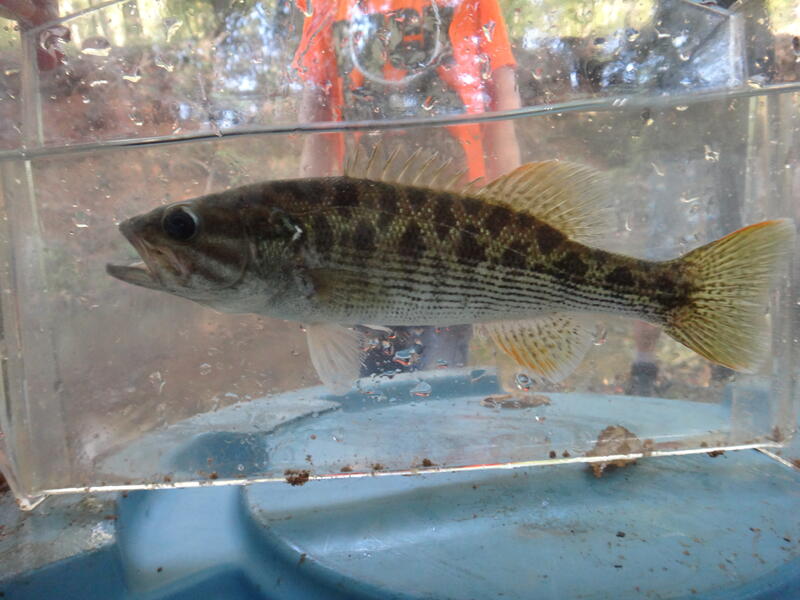







Loading profile. Please wait . . .
Micropterus calliurus Freeman and Freeman, 2025
Altamaha Bass




Federal Protection: No US federal protection
State Protection: No Georgia state protection
Global Rank: GNR
State Rank: S1S2
Element Locations Tracked in Biotics: Yes
SWAP 2015 Species of Greatest Conservation Need (SGCN): Yes
SWAP 2025 Species of Greatest Conservation Need (SGCN): Yes
2025 SGCN Priority Tier: Highest Conservation Concern
Element Occurrences (EOs) in Georgia: 17
Habitat Summary for element in Georgia: Believed to be headwater species but patterns altered by non-native species
The following description is excerpted directly from Freeman et al. (2015): Altamaha and Ogeechee River specimens have burnt orange on the anterior distal third of soft dorsal fin rays 1–5 (often just restricted to the tips), the anterior distal third of rays 1–6 of the anal fin, and a narrow margin along the upper and lowermost two caudal rays, often reduced to the distal one-third to one-fourth of these rays. This burnt-orange coloration is more pronounced in juveniles and is rapidly reduced in extent of coverage in adults. The basal half of the caudal fin rays is pigmented to produce a spotted appearance. The soft dorsal and anal fin rays are pigmented and appear variously banded but not spotted. Specimens have 8–11 lateral blotches, some of which are 7 or more scales in width; subdued in specimens larger than 90 mm SL. Lateral line scale count usually 65–69 (mean 67.5).
Micropterus chattahoochae, Micropterus sp. "Savannah"
Believed to be headwater species, but patterns altered by non-native species.
Primarily above the fall line in the Altamaha and Ogeechee. Largely wiped out in the Ocmulgee River in the area below Lake Jackson (Lloyd Shoals Dam). Endemic to Georgia.
Invasive/Alien Species, Residential Development, Dam and Impoundment Construction, Hybridization with spotted bass and competition with shoal bass, Population fragmentation from any source
| Threat 1 | Threat 2 | Threat 3 | |
|---|---|---|---|
| General Threat | Invasive & other problematic species, genes & diseases | Pollution | Natural system modifications |
| Specific Threat | Invasive non-native/alien species/diseases | None | Dams & water management/use |
Freeman, Byron, Andrew Taylor, Kenneth Oswald, John Ware, Mary Freeman, Joe Quattro and Jean Leitner. 2015. Shoal Basses: A Clade of Cryptic Identity. In Black Bass Diversity, Multidisciplinary Science for Conservation, American Fisheries Society Symposium 82, editors M.Tringalli, J.Long, T.Birdsong and M.Allen, pp 449-466
8/21/2018